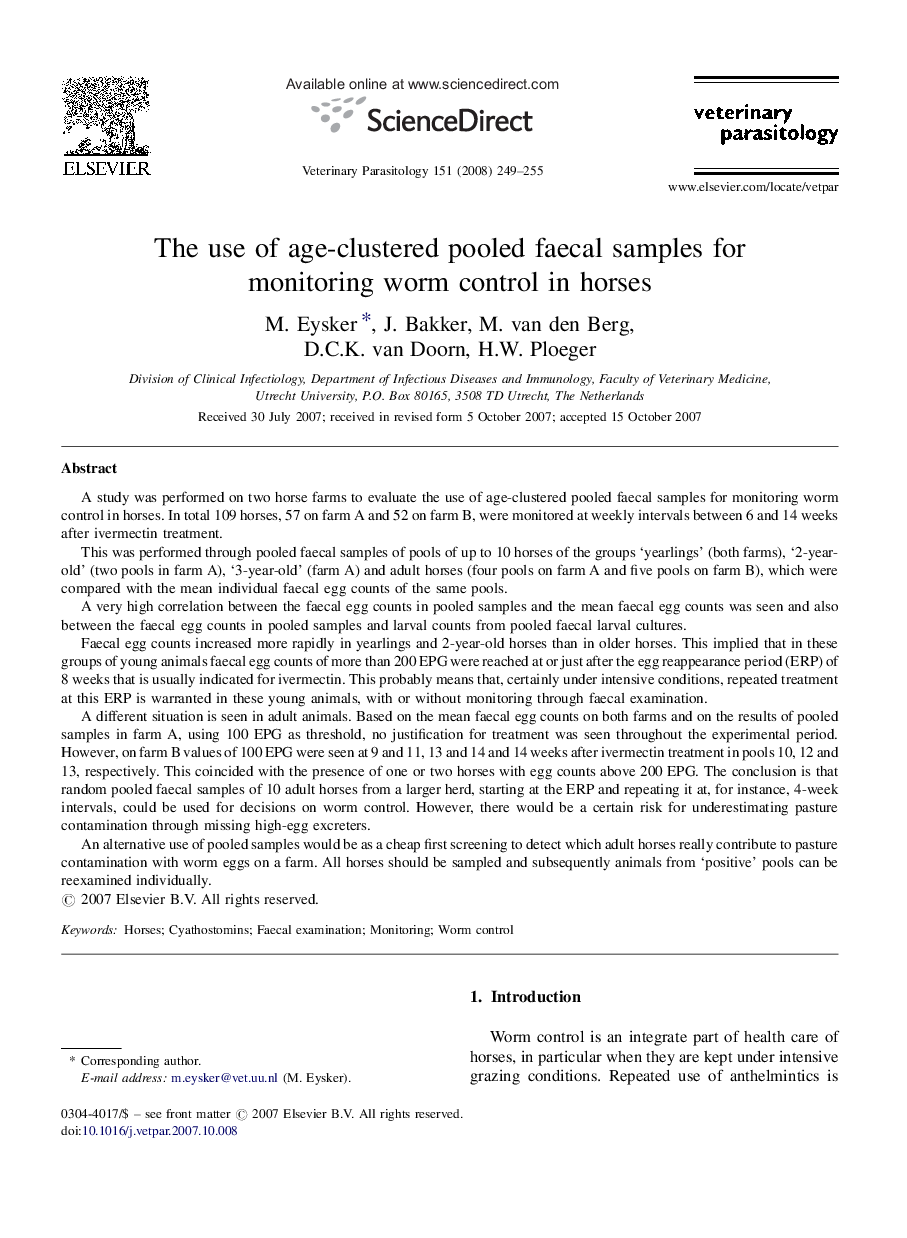| کد مقاله | کد نشریه | سال انتشار | مقاله انگلیسی | نسخه تمام متن |
|---|---|---|---|---|
| 2471653 | 1555773 | 2008 | 7 صفحه PDF | دانلود رایگان |

A study was performed on two horse farms to evaluate the use of age-clustered pooled faecal samples for monitoring worm control in horses. In total 109 horses, 57 on farm A and 52 on farm B, were monitored at weekly intervals between 6 and 14 weeks after ivermectin treatment.This was performed through pooled faecal samples of pools of up to 10 horses of the groups ‘yearlings’ (both farms), ‘2-year-old’ (two pools in farm A), ‘3-year-old’ (farm A) and adult horses (four pools on farm A and five pools on farm B), which were compared with the mean individual faecal egg counts of the same pools.A very high correlation between the faecal egg counts in pooled samples and the mean faecal egg counts was seen and also between the faecal egg counts in pooled samples and larval counts from pooled faecal larval cultures.Faecal egg counts increased more rapidly in yearlings and 2-year-old horses than in older horses. This implied that in these groups of young animals faecal egg counts of more than 200 EPG were reached at or just after the egg reappearance period (ERP) of 8 weeks that is usually indicated for ivermectin. This probably means that, certainly under intensive conditions, repeated treatment at this ERP is warranted in these young animals, with or without monitoring through faecal examination.A different situation is seen in adult animals. Based on the mean faecal egg counts on both farms and on the results of pooled samples in farm A, using 100 EPG as threshold, no justification for treatment was seen throughout the experimental period. However, on farm B values of 100 EPG were seen at 9 and 11, 13 and 14 and 14 weeks after ivermectin treatment in pools 10, 12 and 13, respectively. This coincided with the presence of one or two horses with egg counts above 200 EPG. The conclusion is that random pooled faecal samples of 10 adult horses from a larger herd, starting at the ERP and repeating it at, for instance, 4-week intervals, could be used for decisions on worm control. However, there would be a certain risk for underestimating pasture contamination through missing high-egg excreters.An alternative use of pooled samples would be as a cheap first screening to detect which adult horses really contribute to pasture contamination with worm eggs on a farm. All horses should be sampled and subsequently animals from ‘positive’ pools can be reexamined individually.
Journal: Veterinary Parasitology - Volume 151, Issues 2–4, 14 February 2008, Pages 249–255